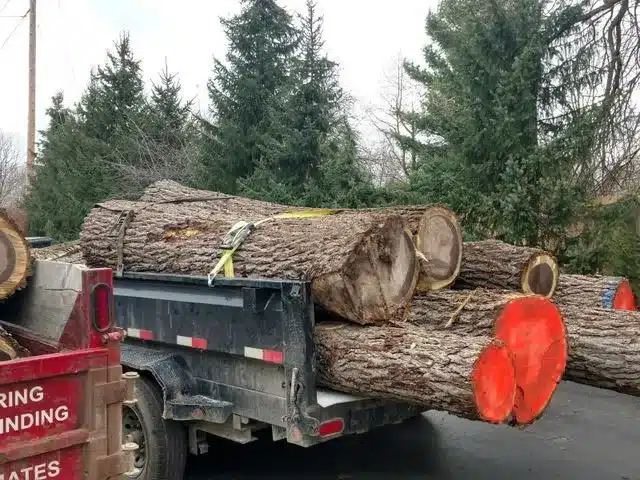Lou will mark the boundaries of your property and will “cruise” your woodlot to determine the quality and quantity of lumber that can be sustainably harvested. Mature trees that are suitable for lumber are hand-selected and marked. This practice helps to ensure that your woodlot remains a productive income source in years to come.
We understand that certain trees or your whole woods may hold special significance for you and for that fact Lou will consult with you about the number and size of trees to cut and the location of logging roads and landings. Lou will also be happy to discuss any questions and concerns you may have and make sure you’re comfortable with the selections and the process.
We’ll contact you several days before logging begins. Only fully insured employees of Lou’s Cutting Edge Tree Service will have access to your land. Typically, we cut about 40 trees a day with one logging crew on-site. Tops and branches are left on the land to return nutrients to the soil, to provide habitat for wildlife, to promote diversity, and to protect new growth. Left to regenerate naturally, a new generation of young saplings will spring up within two or three years, and the hardwood cycle will begin again.
We focus on making a selective cut to ensure the wood produces more and more trees for future generation and harvest.

The ideal trees for harvesting lumber are those that grow straight with a minimal amount of branching and knots. This results in high-grade lumber with fewer defects and better structural properties.
Species commonly used for lumber include conifers such as pine, fir, spruce, and cedar, as well as hardwoods such as oak, hickory, and maple. Different tree species have varying degrees of hardness, durability, and moisture resistance, which makes them suitable for different applications. For example, hickory and oak are often used for flooring, while cedar is commonly used for outdoor applications like decking and fencing.
In addition to the physical properties of the tree, the growth rate and the size of the tree are also important considerations for lumber harvesting. Fast-growing trees, like poplar and pine, can produce lumber more quickly, while larger trees can yield larger amounts of timber. However, it is important to practice sustainable forestry practices to ensure that trees are replanted and harvested responsibly to minimize the impact on the environment.